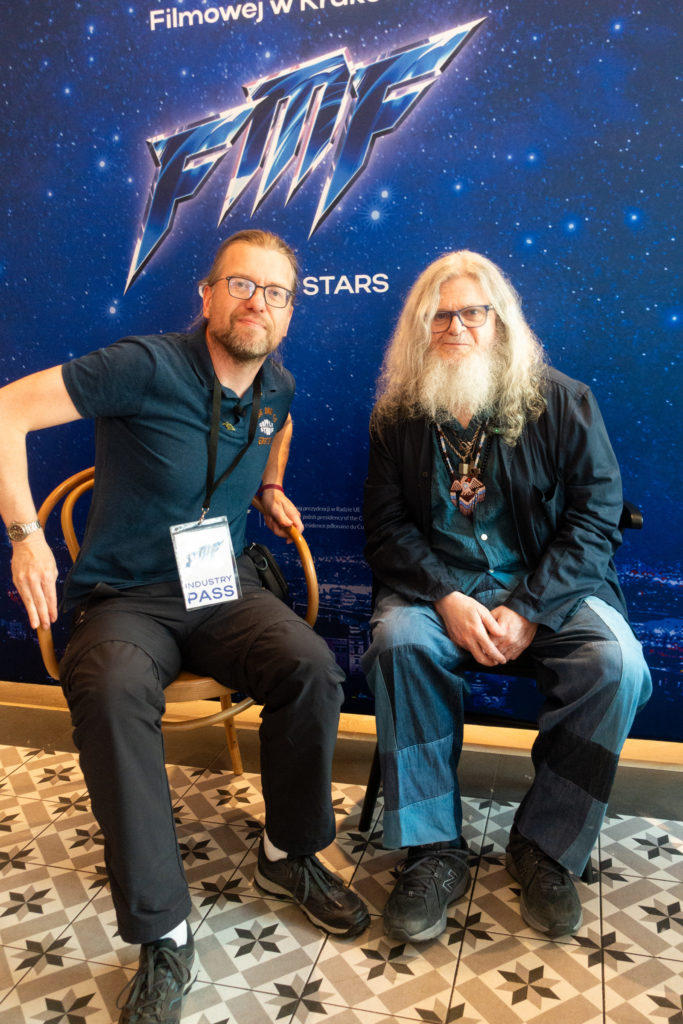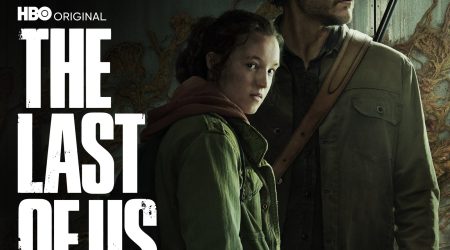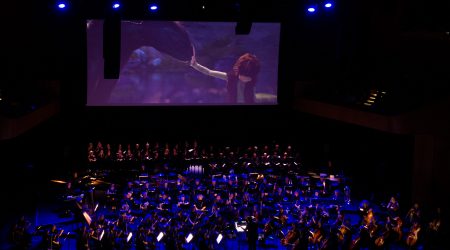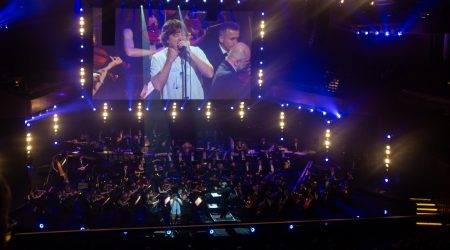Spoiler warning: In this interview, major plot points will be discussed from The Last of Us games and TV show.
During the Krakow Film Music Festival, I had the privilege of speaking with Argentine composer Gustavo Santaolalla, who won Oscars for his music for Babel and Brokeback Mountain. He is also responsible for the iconic music for the game and the TV Show, The Last of Us. During the interview, held on May 28, 2025, we discussed the game, his influences, and, of course, his iconic instrument: the ronroco.
Anton Smit: I am Anton Smit from the Netherlands. Thank you for this interview.
Gustavo Santaolalla: I have been in the Netherlands several times, playing and also just traveling. I love the Netherlands. I am also a big fan of Flemish culture. I love it. I am a huge fan of particular Flemish painters, like Bruegel, Van der Weyden and Van Eyck, obviously Hieronymus Bosch and Vermeer. I love all of them.
AS: Talking about Belgium. You have attended the World Soundtrack Awards in Ghent. I was there as well, and I have been sitting in a concert hall full of young people, mostly gamers. There is a full orchestra on stage, and you come to the stage, sit down with your ronroco, and you start to play. I still remember when the piece was done; you get a moment of silence, and then the standing ovation from the audience begins because everyone loved it so much. So, how is it possible to get so much emotion from such a small instrument?
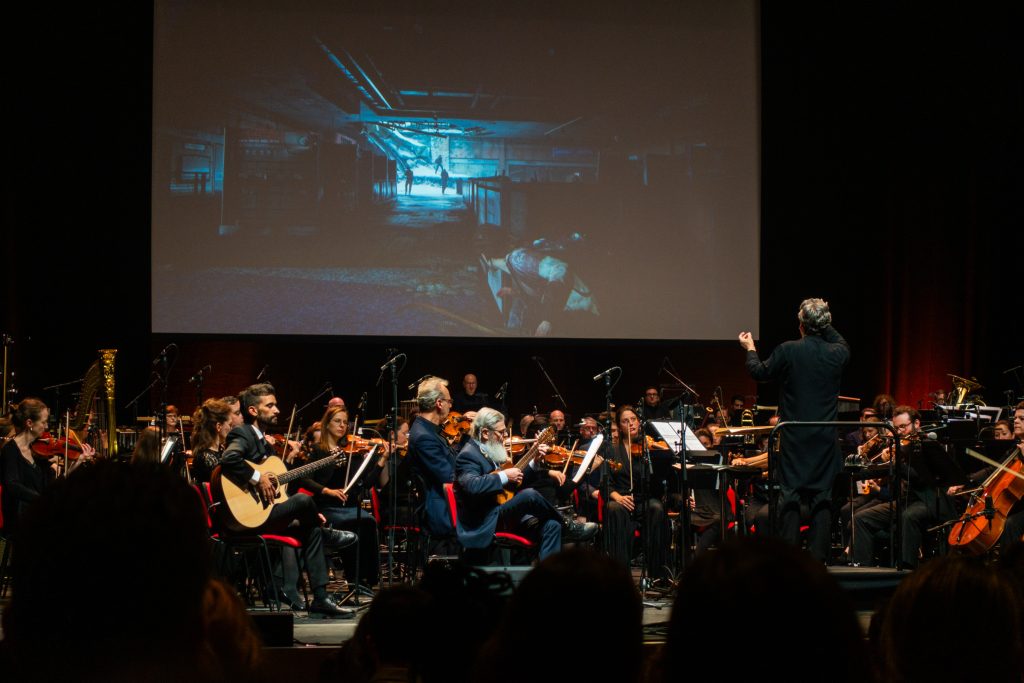
GS: Well, a violin is a very small instrument too and you get incredible emotion. Well, it is an instrument, and it has to do with what you have to say with it. I found in that instrument something incredible, like a connection that is unique. I can’t explain it. I have a nice story about that.
I have done and I still do many different things. I had a big career, also as a producer. I have produced more than a hundred albums of alternative music of all kinds. From a group like Café Tacuba, Juanes, to the Kronos Quartet doing an album of Mexican music. When my career as a producer was really on top, I was called to put together a compilation of Jaime Torres. Jaime Torres is like what Ravi Shankar was, because he is dead already. He was like the Ravi Shankar of the charango, which is a relative of the ronroco. I used to see Jaime play, and he is originally from Latin America: Born from Bolivian parents, but born in Argentina. He is an indigenous guy. I used to watch him on TV as a kid. He played in the Misa Criolla and stuff, and he has always been this great charango player.
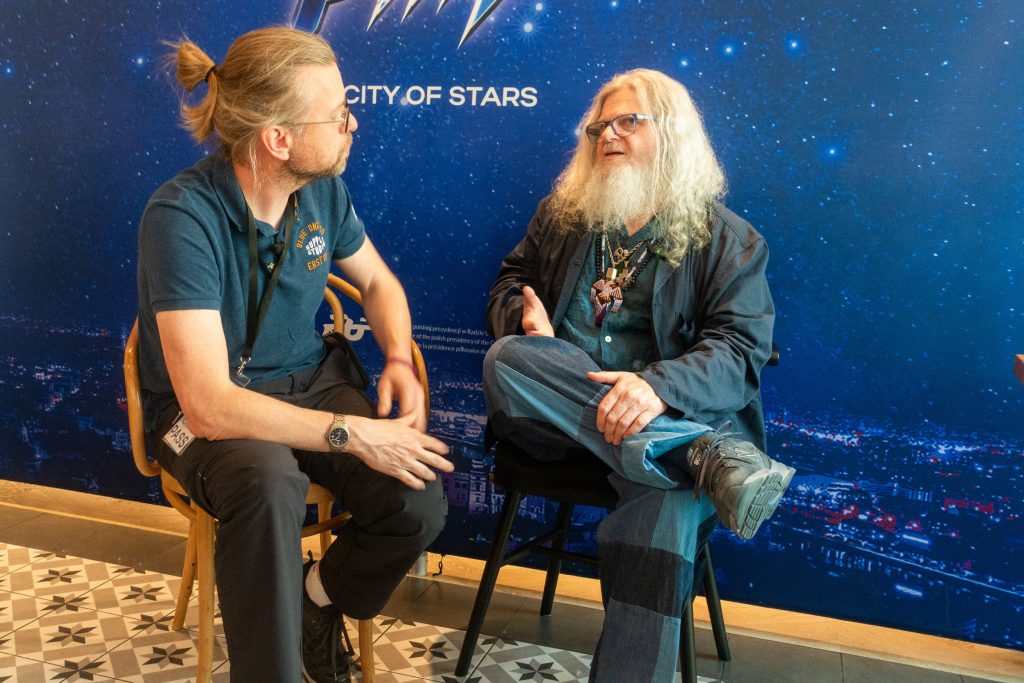
When I was called to put together a compilation of his whole career, I got to meet the guy, and for me, it was like meeting the master. I have been recording these things with the ronroco for years, just for me. I put records out and work, but this was for me. Once I met him, I wanted to show this to him, but at the same time, I was worried, because I don’t play with their technique. All the music I write with the ronroco doesn’t necessarily sound like music from the Andes Mountains. Some of it sounds like it’s from Eastern Europe like “Iguazu,” Africa, or sounds Oriental.
So it took me a while. We became huge friends later, but at that moment, I was star-struck. So, one day, I finally went: “Jaime, this is something that some friends of mine do.” I didn’t say that it was me. So I gave it to him, and like three days later, he called me and he called me out. Saying that he would not be fooled and that I was the guy playing there. I confirmed and said that I don’t play with his technique. He said that there are no rules of how you play. He said that I had to make a record and put this out because people needed to know this. So I collected all my recordings. I did a few more recordings: One with him and the other one was “Iguazu,” and I put the album Ronroco out, which is 13 years of my life, and look what happened. It opened the doors to the movies and stuff like Motorcycle Diaries and Amores Perros, for the ronroco that is, not in Brokeback Mountain, but in most of my movies, and in The Last of Us. I have something with that instrument. Jaime Torres said that I had found the spirit of that instrument. The world needed to hear this, and he really pushed me to put that record out. That is why I released that album.
AS: The Last of Us is a video game, and it needs music, but how did you write the music? Did creator Neil Druckmann tell you the story? Did you already see the images?
GS: No, but imagine that I have already created a sort of narrative of my work that was known. I like to write music from the very beginning of a project, from the script or from conversations with the director. The biggest example is Brokeback Mountain, where the whole score was done before one frame was shot. Ang Lee’s genius was to say, “We’re going to use this here, we’re going to use that here, we’re going to repeat.” That was all Ang. He had all the music before shooting. He played it to the actors, he listened to it during filming and stuff.
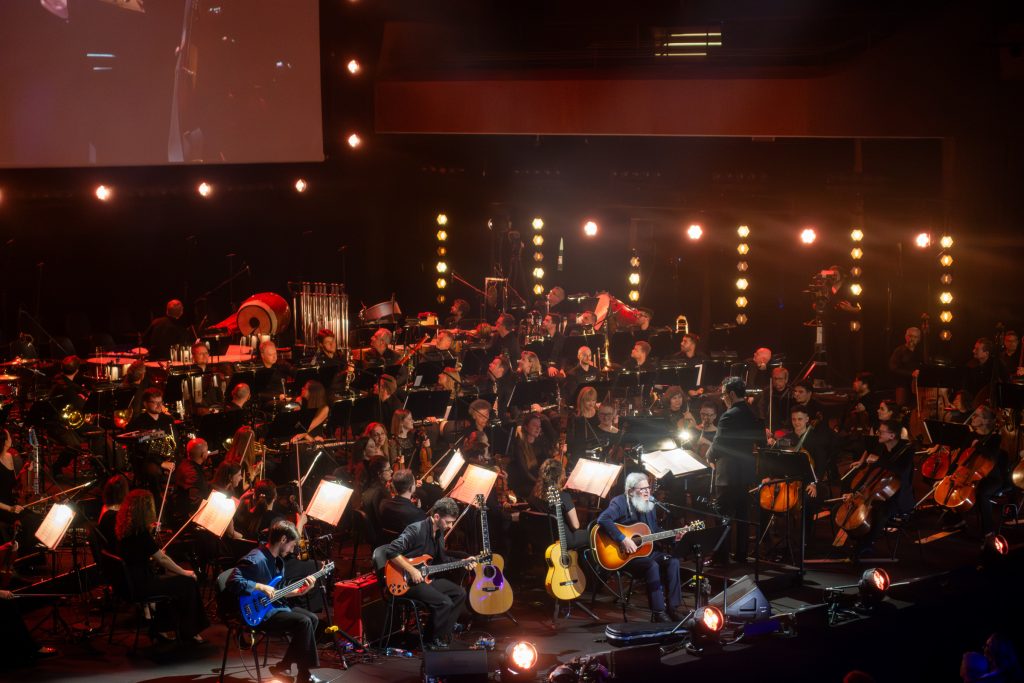
So, when I arrived to work in the game, it was like that, because you get to see stuff in movement in a game two years later. So, you start working basically from the story and from some drawings, and that’s it. That is basically the way I work. But I never felt that I was writing music for a game. I always felt I was writing music for a great story. That’s why I think, I knew that this, taken in the hands of the right people, could turn into anything: A feature film, a TV series, a puppet theater or an animation. You can do it anywhere, because it’s a great story.
It has the infected, or zombies, and some of these people say that it is another story about them, but that is really the backdrop. The core of the thing is the human aspect of it. The things about us as humans with our contradictions and our moral dilemmas. I mean, we participate in that, because remember that in the first game and also in the series too, when Joel and Ellie get to the West Coast and go to the Fireflies, where they are working on the cure, he realizes that to get that cure, they’re going to have to kill Ellie. He kills the doctors, he kills everybody. Ellie is asleep, and when she awakes, you know, she doesn’t know what happened, and, in a way, we feel good, because we have invested so much in that character, that we also didn’t want Ellie to be killed. But then, when Abby appears in the game, then this moral dilemma becomes more clear.
That is also the genius of Neil, that, at a certain point, after you invested the whole game, and almost half of The Last of Us – Part 2 with Ellie, suddenly, you’re playing with Abby. Now you’re on the other side, because Abby was the daughter of one of the murdered doctors who was working to cure something for humankind. These moral dilemmas are at the core of this great story, this contradiction. That’s why it makes it so human and so real. That is why it hits people the way it does. It’s not predictable, and it is not Hollywood in any sense.
AS: I have heard a lot about young composers following a specific trajectory to try to get to Hollywood by attending conservatories and music schools, learning about making music with computers and studying orchestration. What kind of advice, from your unique point of view, would you give to them?
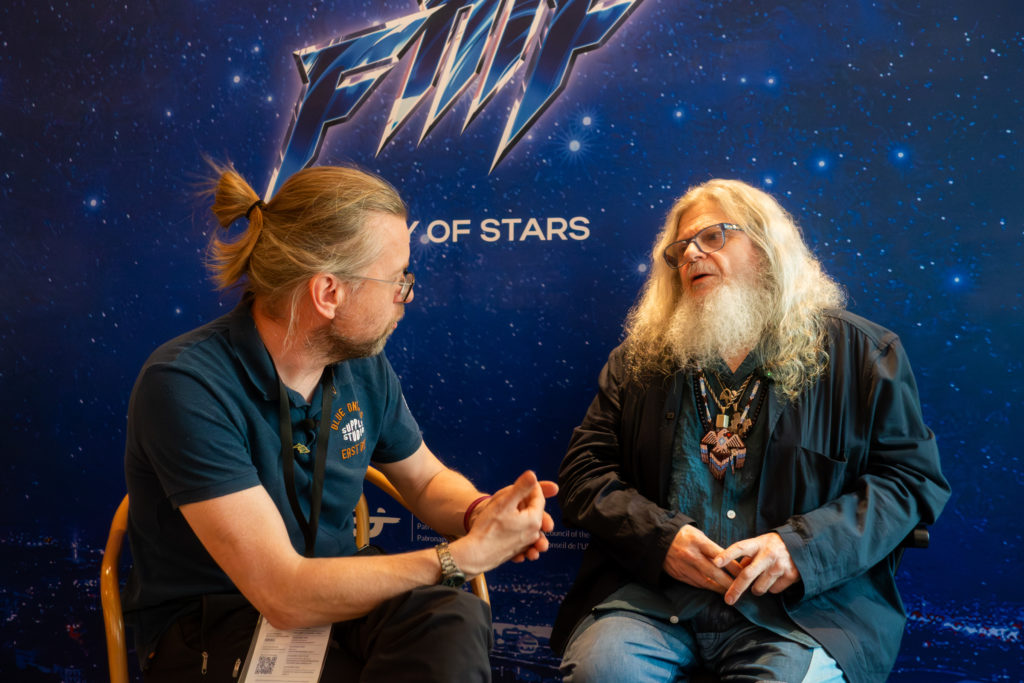
GS: Listen, I don’t have anything against it, but I don’t represent Hollywood at all. None of my projects do, but I don’t have anything against that. It’s just that, I guess, we never have crossed paths because they know that I am perhaps not the right person to do other types of projects. I am very picky about what I do. I always say that my success has to do with what I have done, but also with the stuff that I have declined.
My advice has always to do with discipline, having a protocol of work. That is so important. I love the Picasso phrase, “Inspiration exists, but it has to find you working.” I don’t sit down in a chair waiting for the light bulb to go. I work, and sometimes I connect immediately, sometimes it takes me hours, a day or two days to connect. The number one thing is to work. That is important.
Number two is finding your identity. Who are you? What is your sound? What do you want to say with an instrument? What do you want to say as an artist? It is so important, do not be like: I want to be like that singer or that band. I mean, you can admire and learn from other things, but you have to find who you are – your own identity. Once you have found that, the third thing is to stick to that vision, because some people say they will do it for now, but then they will do what they want to do. For me, it doesn’t work. For me, if you have the work ethic, the discipline, you really find and work on your identity, and you stick to it, sooner or later, things happen.
AS: So, you are coming to the Netherlands in October for a concert. So for my final question I am curious what can the audience expect from that concert?
GS: Very different from everything that I’ve done before, because my concerts have always been marked by a tremendous eclecticism. Something very electric, acoustic, classical and very rock. This concert is about the ronroco and about that world. If you listen to the albums Ronroco or Camino, the concert is about that. It is incredible, because when I did this last year, it was quite successful. This is a much bigger tour now, because it was so successful. I didn’t even know what it was going to be, because I have never done a concert that is all around one mood, but I found that this concert is important, and that it has a place in society right now, with the world that we are living in now, and that the concert plays a role. If you have the opportunity, don’t miss it. It’s something very different!
AS: I want to thank you very much for this interview.
GS: You are very welcome.
Thanks to the Krakow FMF organisation for the interview opportunity, Stefan Bosman for taking care of the sound and Maurice Boeijen for taking pictures during the interview.

